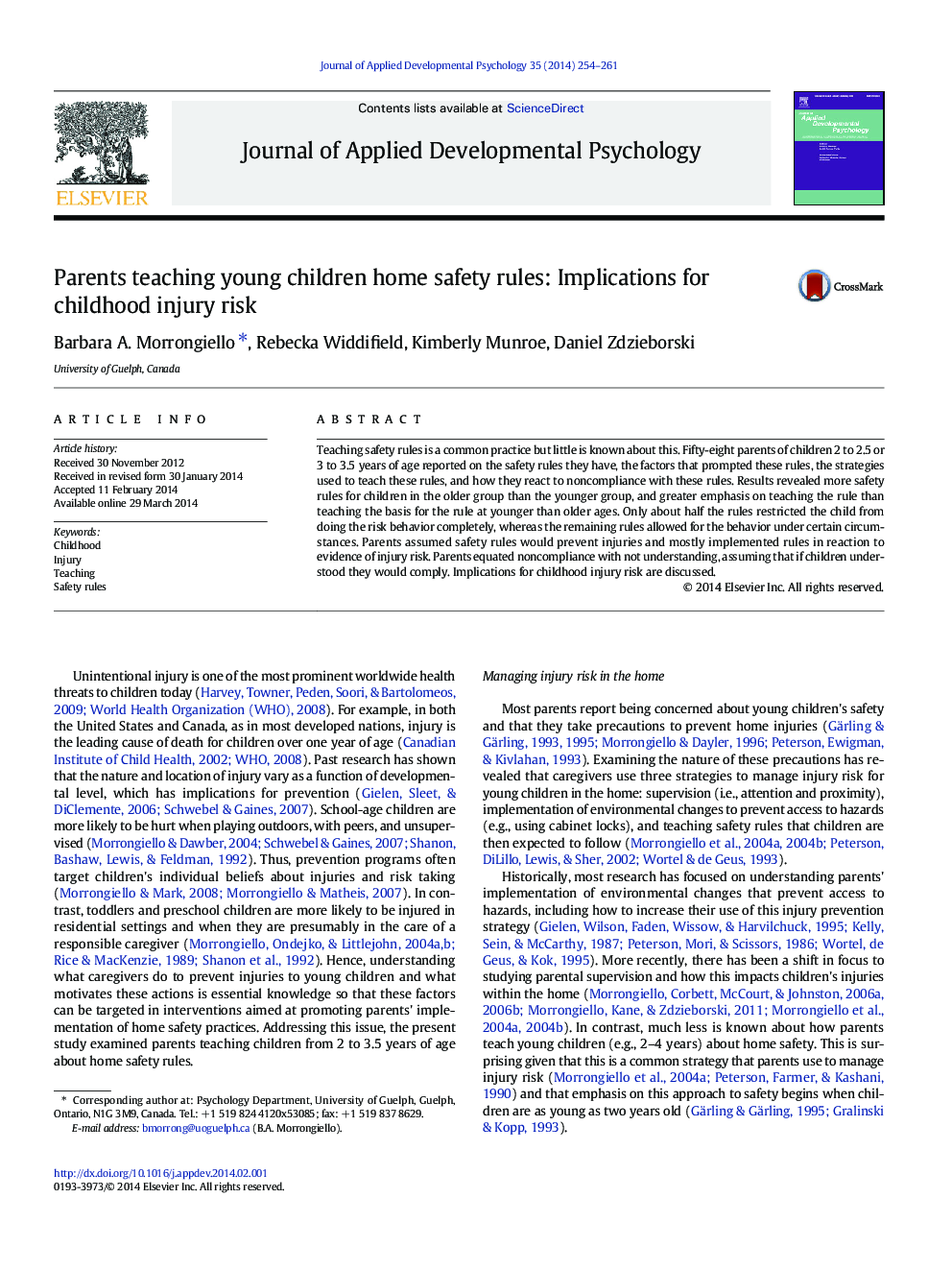| Article ID | Journal | Published Year | Pages | File Type |
|---|---|---|---|---|
| 359680 | Journal of Applied Developmental Psychology | 2014 | 8 Pages |
•Results revealed more rules for children in the older age group than the younger age group.•Parents taught the actual rule more than the basis for the rule in the younger age group.•About half the rules restricted the child from doing the risk behavior completely.•The remaining rules allowed for the risk behavior under certain circumstances.•Implications of these findings for children's risk of injury are discussed.
Teaching safety rules is a common practice but little is known about this. Fifty-eight parents of children 2 to 2.5 or 3 to 3.5 years of age reported on the safety rules they have, the factors that prompted these rules, the strategies used to teach these rules, and how they react to noncompliance with these rules. Results revealed more safety rules for children in the older group than the younger group, and greater emphasis on teaching the rule than teaching the basis for the rule at younger than older ages. Only about half the rules restricted the child from doing the risk behavior completely, whereas the remaining rules allowed for the behavior under certain circumstances. Parents assumed safety rules would prevent injuries and mostly implemented rules in reaction to evidence of injury risk. Parents equated noncompliance with not understanding, assuming that if children understood they would comply. Implications for childhood injury risk are discussed.
